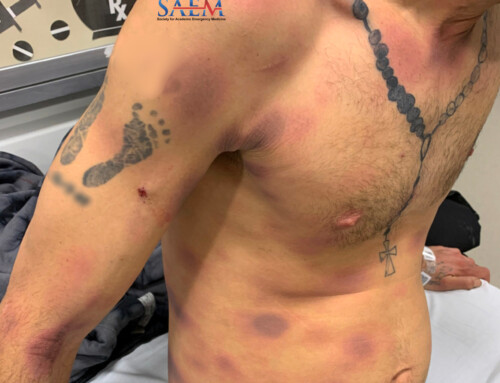 Case: A 24 year old male presents with right sided lip swelling that began several hours ago. This is the second time he has had this type of swelling. His mother has also had this before. He currently has no urticaria, dyspnea, wheezing, or stridor. What is the cause of this patient’s symptoms?
Case: A 24 year old male presents with right sided lip swelling that began several hours ago. This is the second time he has had this type of swelling. His mother has also had this before. He currently has no urticaria, dyspnea, wheezing, or stridor. What is the cause of this patient’s symptoms?
Poll Results
[plot id=”1″] [su_spoiler title=”Answer” style=”fancy” icon=”caret”]C1 inhibitor deficiency
Explanation
Angioedema is characterized by non-pitting edema of the dermis and subcutaneous layers of the extremities, abdomen, genitourinary tract, tongue, lips, face, or larynx. The cause of this patient’s presentation is hereditary angioedema, an autosomal dominant disease caused by a decrease in C1 inhibitor enzyme.1
This patient’s unilateral lip swelling progressed rapidly.

Airway management is the most important aspect of emergency department management. Fiberoptic nasopharyngeal laryngoscopy is indicated when hoarseness, odynophagia, voice change, or dyspnea are present, as these signs may represent significant airway edema.2
Though commonly given, antihistamines, corticosteroids, and epinephrine are not effective for treating non-allergic angioedema. Effective therapies for hereditary angioedema include:2
| Therapy | Mechanism |
| Berinert/Cinryze | Human plasma derived C1 esterase inhibitor |
| Ecallantide | Reversible inhibitor of kallikrien, which produces bradykinin from kininogen |
| FFP | Not FDA approved. Contains ACE (kininase II) which degrades bradykinin |
| Icatibant | Selective bradykinin B2 receptor antagonist |
| Ruconest | Recombinant human C1 inhibitor, available in Europe |
Master Clinician Bedside Pearls
Christopher I. Doty, MD FAAEM FACEP
Program Director & Vice Chair for Education
Associate Professor of Emergency Medicine
Department of Emergency Medicine
University of Kentucky-Chandler Medical Center
Twitter: @PoppasPearls




